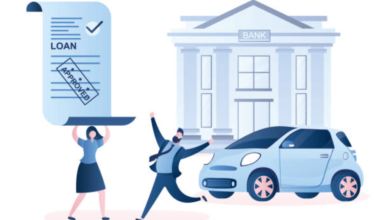
Learn All About What is a Good APR for a Loan?
When you’re in the market for a loan, one of the most crucial factors to consider is the Annual Percentage Rate, commonly known as APR. Understanding what constitutes a good APR can significantly impact your financial decisions. In this article, we will delve into the world of what is a good APR for a loan, explaining what it is, how it’s calculated, and what qualifies as a good APR for various types of loans.
Understanding what is a good APR for a loan
What is APR?
Financial metric that represents the true cost of borrowing. It encompasses not only the interest rate on the loan but also any additional fees and charges that the lender may impose. In essence, APR provides a comprehensive picture of a loan’s cost.
How is APR Calculated?
APR is calculated by taking the interest rate and adding any fees associated with the loan, such as origination fees or closing costs. This total cost is then spread over the loan’s term to provide an annualized percentage.
Why is APR Important?
Understanding APR is essential because it allows borrowers to make informed decisions. A lower APR indicates a more cost-effective loan, while a higher APR means you’ll pay more for borrowing money. To determine whether a loan is affordable, assessing the APR is crucial.
Factors Influencing APR
Several factors can influence the APR you are offered by lenders. These include:
Loan Type
May have varying average APR ranges. Each type of loan has unique risk factors that lenders consider when setting interest rates.
Market Conditions
Economic conditions and interest rate trends also affect APR. Borrowers may find more favorable APRs during low-interest rates than during high interest rates.
What is a Good APR for a Mortgage?
A good APR for a mortgage typically falls in the range of 3% to 4%. However, the specific APR you qualify for mortgage, and market conditions.
What is a Good APR for an Auto Loan?
A good APR often ranges from 3% to 5% for auto loans. Again, your credit score, the loan term, and the vehicle’s age can impact the APR you receive.
What is a Good APR for a Personal Loan?
Personal loans usually come with higher APRs than mortgages or auto loans. A good APR for a personal loan can range from 6% to 10%.
How to Get a Lower APR
If you want to secure a lower APR on your loan, consider these strategies:
Improve Your Credit Score
Boosting your credit score by making timely payments and reducing outstanding debt can help you qualify for lower APRs.
Shop Around
Compare loan offers from multiple lenders to find the most competitive APR. Don’t settle for the first offer that comes your way.
Negotiate with Lenders
In some cases, you may be able to negotiate the APR with a lender, especially if you have a strong credit history.
Comparing Fixed and Variable APR
When evaluating loan options, it’s essential to understand the difference between fixed and variable APR. Term, providing stability in your monthly payments. In contrast, a variable APR can change over time, potentially leading to fluctuating payments.
APR vs. Interest Rate
While APR and interest rate are related, they are not the same. The interest rate refers to the cost of borrowing money, while APR includes additional fees. Always consider both when evaluating loan offers.
The Importance of Reading the Fine Print
Before signing any loan agreement, carefully Hidden fees or penalties can significantly impact the true cost of the loan.
APR and Your Financial Goals
Consider your financial goals when assessing loan offers. A slightly higher APR may be acceptable if it aligns with your long-term financial plans.
Common APR Misconceptions
There are several misconceptions about APR, such as thinking it’s the same as the interest rate. By educating yourself about APR, you can make more informed financial decisions. Read more…
Conclusion
In summary, understanding what is a good APR for a loan is essential for making sound financial choices. Your credit score, loan type, and market conditions all play a role in determining the APR you qualify for. By comparing offers, improving your creditworthiness, and reading the fine print, you can secure a loan with a favorable APR that suits your financial needs.
FAQs About APR
1. What does APR stand for?
APR stands for Annual Percentage Rate.
2. Is a lower APR always better?
A lower APR is generally better as it signifies a less expensive loan. However, other factors, such as loan terms and fees, should also be considered.
3. How does my credit score affect my APR?
A higher credit score often leads to a lower APR, as it indicates lower risk to lenders.
4. Can I negotiate my APR with a lender?
Yes, in some cases, you can negotiate your APR with a lender, especially if you have a strong credit history.
5. What’s the difference between APR and interest rate?
The interest rate represents the cost of borrowing money, while APR includes additional fees and charges, providing a more comprehensive picture of the loan’s cost.



